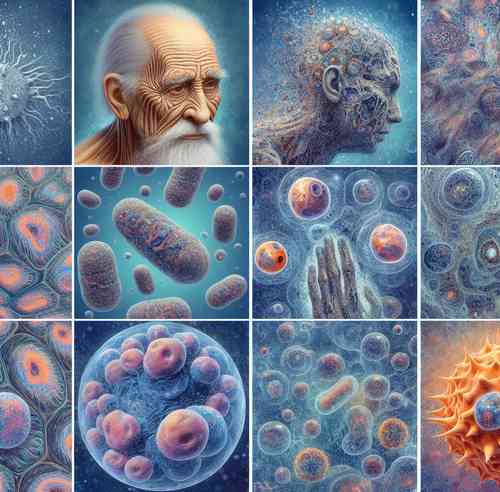Autophagy is a vital cellular process that plays a significant role in recycling damaged components and building new molecules for cell renewal. First discovered in 1960, its importance was fully realized in 1990 by Japanese scientist Yahinori Ohsumi, who won the Nobel Prize in 2016 for his work. The term “autophagy” comes from Greek and means “eat oneself,” as cells break down damaged proteins to form new molecules via lysosomes.
While commonly associated with youthful appearance in the beauty industry, autophagy is critical to various health conditions such as Alzheimer’s, Parkinson’s, and other neurodegenerative diseases. In the nervous system, where neurons do not divide and have a long lifespan, an efficient autophagy system is essential for cell maintenance and balance between protein synthesis and degradation. Aging and neurodegenerative diseases disrupt this process, leading to the accumulation of damaged proteins and organelles in neurons, causing dysfunction and neurodegeneration.
Researchers are exploring ways to enhance autophagy efficiency to improve cellular health. One promising avenue is beta-hydroxybutyrate (BHB), a molecule that has shown promise in improving the autophagy process by recycling damaged components and promoting cell renewal. Dr. Lourdes Massieu Trigo’s research team focuses on understanding how BHB can enhance autophagy and improve lysosomal function in acute conditions like cerebral infarction and insulin-induced hypoglycemia. This approach aims to develop new strategies for treating age-related conditions and neurodegenerative diseases through rejuvenation therapy.
While there is still much to learn about autophagy’s therapeutic potential, ongoing studies suggest that enhancing autophagy through molecules like BHB could be a promising avenue for improving cellular health and longevity.
Autophagy: A Vital Cellular Process with Potential Therapeutic Value
In recent years, researchers have become increasingly interested in the role of autophagy in maintaining cell health and preventing disease. Autophagy is a natural process that occurs within all cells from yeast to mammals aimed at breaking down damaged components into new molecules used for cell renewal.
First discovered by Yahinori Ohsumi in 1960 while studying yeast cells, it wasn’t until 1990 that its significance was fully recognized when he received the Nobel Prize for his work on this topic.
The term “autophagy” comes from Greek words meaning “eat oneself,” reflecting how cells break down damaged proteins to form new molecules via lysosomes.
Autophagy plays a critical role in various health conditions such as Alzheimer’s disease, Parkinson’s disease, diabetes mellitus type 2 (DM2), cancer, cardiovascular disease (CVD), kidney disease (nephropathy), liver disease (hepatopathy), inflammatory bowel disease (IBD), autoimmune disorders such as rheumatoid arthritis (RA) or multiple sclerosis (MS), aging-related cognitive decline or dementia such as Alzheimer’s or vascular dementia.
One of the primary functions of autophagy is to maintain homeostasis between protein synthesis and degradation within neurons – which have a long lifespan – making an efficient autophagic system crucial for their maintenance.
However, with age or other stressors such as oxidative stress or inflammation, this process can be disrupted leading to dysfunction of these organelles resulting in accumulation of damaged proteins causing impairments leading to neurodegenerative diseases.
Recent studies have shown that increasing levels of certain metabolites like beta-hydroxybutyrate (BHB) may help enhance autophagic efficiency leading to improved cellular health even during acute conditions such as cerebral infarction or insulin-induced hypoglycemia.


